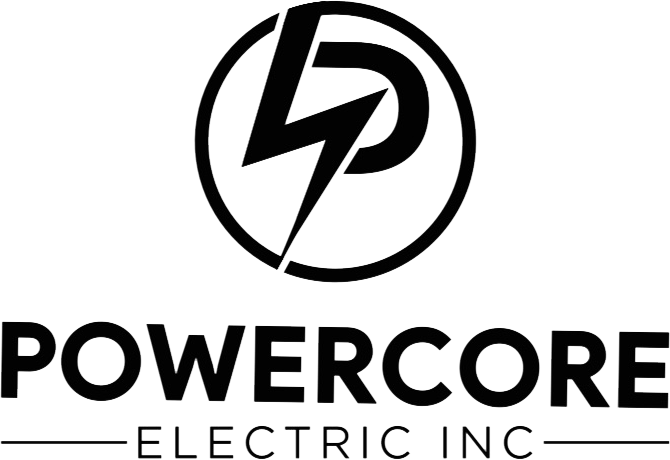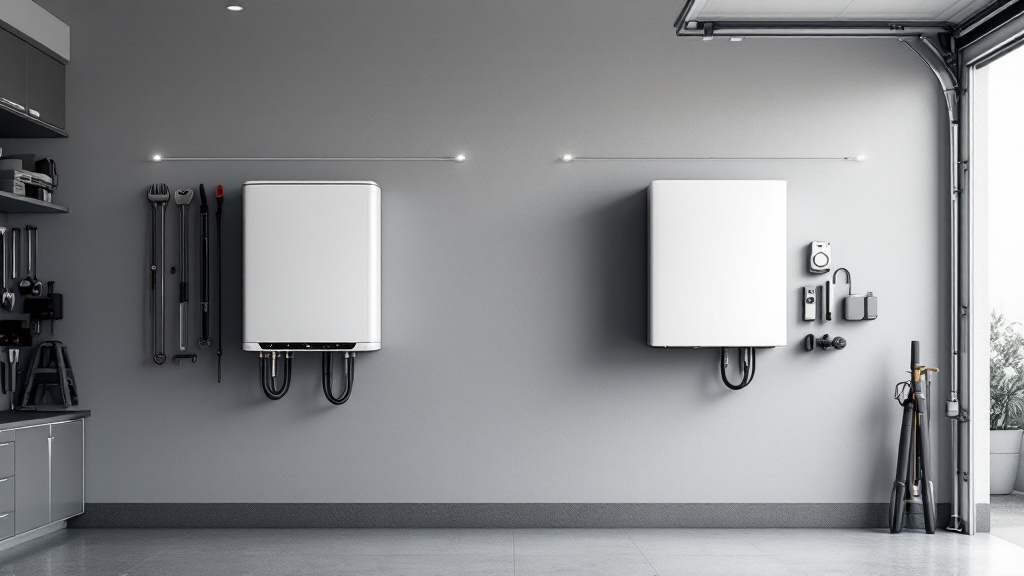Introduction
In the quest for energy independence and sustainability, homeowners are increasingly turning to innovative solutions like Tesla’s Powerwall systems. With the release of the Powerwall 3, many are left wondering how it stacks up against its predecessor, the Powerwall 2. This comparison dives into the key differences between these two models, highlighting enhancements in:
- Energy capacity
- Efficiency
- Installation ease
As energy demands evolve, understanding these distinctions can empower homeowners to make informed decisions that not only optimize their energy usage but also align with their ecological values. Whether it’s managing power during outages or maximizing savings on energy bills, this guide aims to clarify the features and benefits of each Powerwall, helping homeowners choose the best fit for their unique needs.
Key Differences Between Powerwall 2 and Powerwall 3
When it comes to storing power, the differences between models 2 and 3 are quite striking, making them among the best powerwall options for efficient power storage. The battery 3 leads with a slightly improved capacity of 14 kWh, in contrast to the 13.5 kWh of the battery 2. This extra storage can significantly affect your power resilience during outages, offering homeowners greater peace of mind.
Additionally, the dimensions of the energy storage unit, at 1,150 x 753 x 147 mm, may be a consideration for those with limited installation space. A significant enhancement in the third model is its upgraded inverter, which enables more efficient resource management and a faster reaction to household power demands—assisting your home in better utilizing solar power and storing surplus electricity for future use. The battery system 3 also includes improved software functions that optimize energy usage patterns, potentially resulting in greater energy savings over time.
However, it’s worth noting that Tesla has not certified the energy storage system 3 for off-grid use, lacking the necessary features for year-round off-grid operation, particularly in managing external backup power sources. Thankfully, Tesla has streamlined the installation process for the battery system 3, resulting in a quicker and less intrusive setup for your space. With these advancements, the device 3 improves resource management and could lead to possible savings on your utility bill.
As Jason Svarc, an accredited solar and battery specialist, puts it, ‘Having designed and commissioned hundreds of solar systems for households and businesses, I know that a reliable and high-performance solar power system is essential for modern homes.’ A case study titled ‘Comparison of Battery Models’ highlights that while the third model is recommended for its advanced features, the second model may serve as the best powerwall for those with budget constraints or specific power needs. By understanding these key differences, including the ecological benefits associated with efficient resource use and sustainability, you can make an informed choice that aligns with your requirements and ecological values.
Performance and Efficiency: Powerwall 2 vs. Powerwall 3
When it comes to performance, the device 3 truly takes the lead over its predecessor. With its impressive efficiency ratings and a depth of discharge of 100%, this model is considered the best powerwall, delivering a higher power output and making it ideal for eco-conscious homeowners with high energy demands exceeding 5 kW, those needing to start large motor loads, or those planning to expand their solar array. Imagine operating your refrigerator, washing machine, and air conditioner simultaneously without concern for a drop in efficiency—this is precisely what the 3 offers.
Additionally, it boasts an advanced thermal management system that helps keep the battery in top shape, no matter what the weather throws at it. Users have shared glowing feedback, noting that the device 3 serves as the best powerwall, providing a reliable power source even during outages and making it a top choice for those prioritizing performance and reliability. Priced at $11,900 plus $1,700 for the Gateway, the Powerwall 3 reflects its advanced features compared to the Powerwall 2, which costs $10,400 plus $1,700 for the Gateway.
The higher expense is warranted by its improved features, as potential purchasers must evaluate if these enhancements satisfy their particular power requirements. As Tesla states, ‘including an unlimited cycle coverage condition is just one less thing to worry about and means you can enjoy the benefits of energy storage for longer.’ Moreover, taking into account government initiatives that encourage the use of renewable resources and the significance of keeping panels through cleaning services can offer homeowners a comprehensive perspective on their power solutions.
With these characteristics and insights into sunlight solutions, it’s evident why many are contemplating the best powerwall to meet their home power requirements.
Cost Analysis: Is Powerwall 3 Worth the Investment?
When it comes to investing in home energy storage, the third version typically carries a higher initial cost than its predecessor, the second version. This price difference, currently around $1,500, reflects the advanced features of the energy storage system, including an integrated inverter that enhances its performance. As Jason Svarc, an accredited energy and battery specialist, notes, It’s essential to weigh the cost against the potential long-term savings and efficiency gains.
Homeowners should consider how the best powerwall can contribute to reduced energy bills over time, especially with its impressive round trip efficiency of 86%. For individuals investigating the latest in photovoltaic technology, the case study titled ‘Cost Analysis of the best powerwall 3’ reveals that its price is $11,900 plus an additional $1,700 for the Gateway, justifying the increased cost through enhanced features compared to the previous model, which costs $10,400 plus the same Gateway fee. Furthermore, with its longer warranty period, the energy storage system 3 provides added peace of mind and support for your investment.
It is especially recommended for homeowners without an existing energy system or those with larger residences needing backup power. While the initial cost may be higher, the blend of reduced utility costs, enhanced performance, and prolonged service life makes this product the best powerwall for those aiming to improve their autonomy and efficiency over time. Additionally, homeowners can benefit from government programs that support the transition to renewable energy solutions, making the investment more accessible.
Moreover, routine upkeep from leading solar panel cleaning companies is essential for enhancing efficiency, guaranteeing that the energy storage solution operates optimally.
Installation and Integration: What You Need to Know
When it comes to installation, both the 2 and the newly revamped 3 require a professional touch, but the 3 makes the process a breeze. As highlighted by Catherine Lane, a Solar Industry Expert, ‘Solar installers selected the Tesla battery as the easiest to install in our 2024 Solar Industry Survey.’ Thanks to its innovative design, the energy storage unit integrates seamlessly with current photovoltaic setups, which not only decreases installation time but also aids in minimizing expenses.
For eco-conscious homeowners, it’s essential to consider a few key factors: available space, local regulations, and how well the battery will function with your existing energy system. Below is a step-by-step guide for installation:
- Assess your current solar system and determine compatibility with the Powerwall models.
- Consult with a certified installer to assess your power requirements and home layout.
- Prepare the installation site, ensuring compliance with local regulations.
- Schedule the installation, allowing for any necessary permits.
Additionally, during peak times (1PM to 7PM), excess energy can be sold back to the grid at $0.40/kWh, emphasizing the financial benefits of efficient installation and energy management.
A pleased customer recounted a brief power outage where their Tesla transitioned smoothly to backup power, allowing them to continue their activities without interruption. This real-world example illustrates how a smooth installation can significantly influence your overall satisfaction with the system, making it a crucial decision point for many homeowners. To further assess your choices, consider the following specifications:
- Model 2: 13.5 kWh capacity, 5 kW continuous power.
- Model 3: 13.5 kWh capacity, 9.6 kW continuous power, improved integration features.
Comparing these versions can help you identify the best Powerwall that matches your storage requirements.
User Experiences: Real-World Feedback on Powerwall 2 and 3
Responses from users of the Tesla models highlight a varied range of experiences, especially significant in the context of today’s renewable landscape. Numerous owners of the device praise its reliability and effectiveness in managing power during outages, frequently recounting tales of how it successfully kept their homes running during unforeseen blackouts. This aligns well with the insights from recent discussions about Tesla home chargers, including their pricing considerations, and solar panel functionality, as effective energy management is crucial for eco-conscious homeowners looking to maximize their solar investments.
However, a few express concerns regarding its capacity during prolonged outages, although Tesla guarantees that the energy storage system will retain at least 70% of its original capacity by the end of the warranty period. On the flip side, users of the energy storage system 3 have noted significant improvements, particularly in high-demand scenarios. They appreciate its faster response times and enhanced efficiency, which make a noticeable difference in their daily energy management.
This reflects broader market trends where innovative battery solutions are becoming essential for homeowners. Nevertheless, some early adopters have encountered minor integration issues when connecting the energy storage system 3 to older solar systems, something to consider when evaluating options. As Spencer Fields, head of research at EnergySage, aptly puts it, ‘the Powerwall is still the industry standard.’
This highlights an essential takeaway: aligning the chosen model with your household’s unique power requirements is crucial, as tailored installations and setups are often more beneficial than selecting a battery based solely on features. As potential buyers consider their options, they should weigh these real-world insights alongside the benefits of government solar programs and top cleaning services to find the best fit for their specific circumstances, ensuring a comprehensive approach to the solar energy solutions.
Conclusion
The comparison between Tesla’s Powerwall 2 and Powerwall 3 reveals significant advancements that can greatly benefit homeowners seeking energy efficiency and reliability. With the Powerwall 3 boasting a slightly higher energy capacity, improved inverter technology, and enhanced software capabilities, it stands out as a formidable option for those looking to optimize their energy usage. These features not only provide greater peace of mind during power outages but also promise potential savings on energy bills over time.
Moreover, the ease of installation with the Powerwall 3 is a major advantage, making it accessible for a wider range of homeowners. The insights from user experiences further emphasize the importance of selecting a model that aligns with individual energy needs, highlighting how the Powerwall 3 meets the demands of high-energy households more effectively than its predecessor.
Ultimately, the decision between the two models should be guided by an understanding of both current energy requirements and long-term goals for energy independence. By weighing the initial investment against potential savings and efficiency gains, homeowners can make informed choices that not only enhance their energy management but also contribute to a more sustainable future. As the landscape of home energy storage continues to evolve, embracing innovative solutions like the Powerwall 3 may be the key to unlocking a more resilient and eco-friendly lifestyle.


